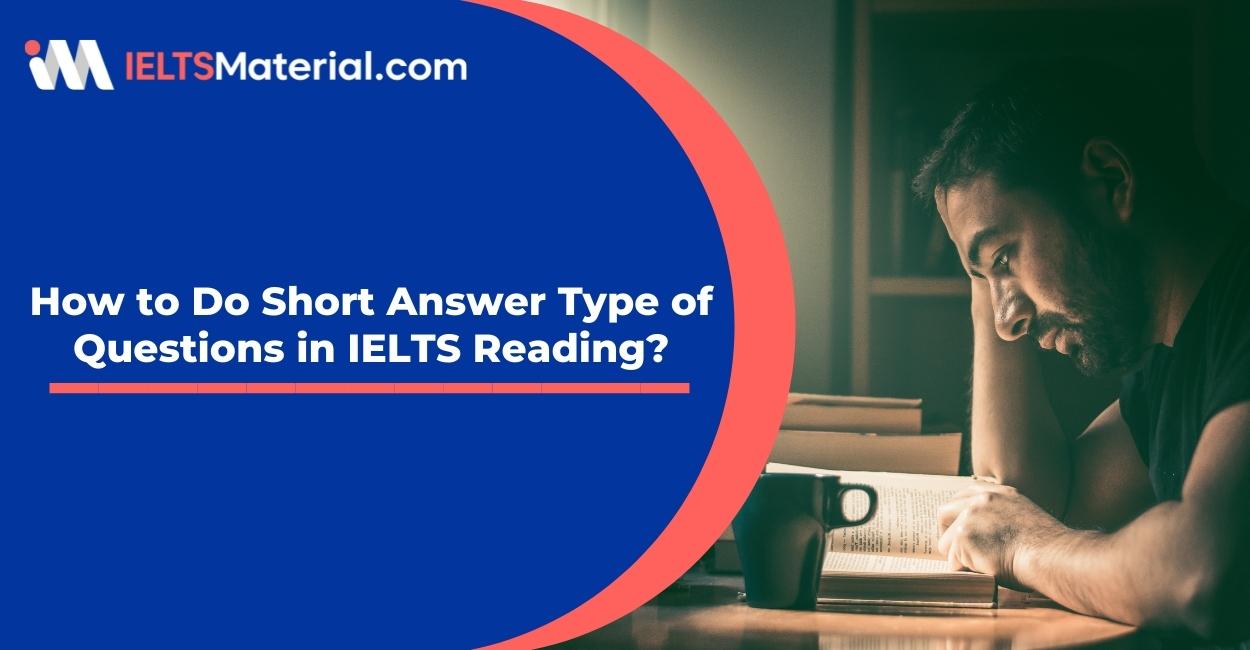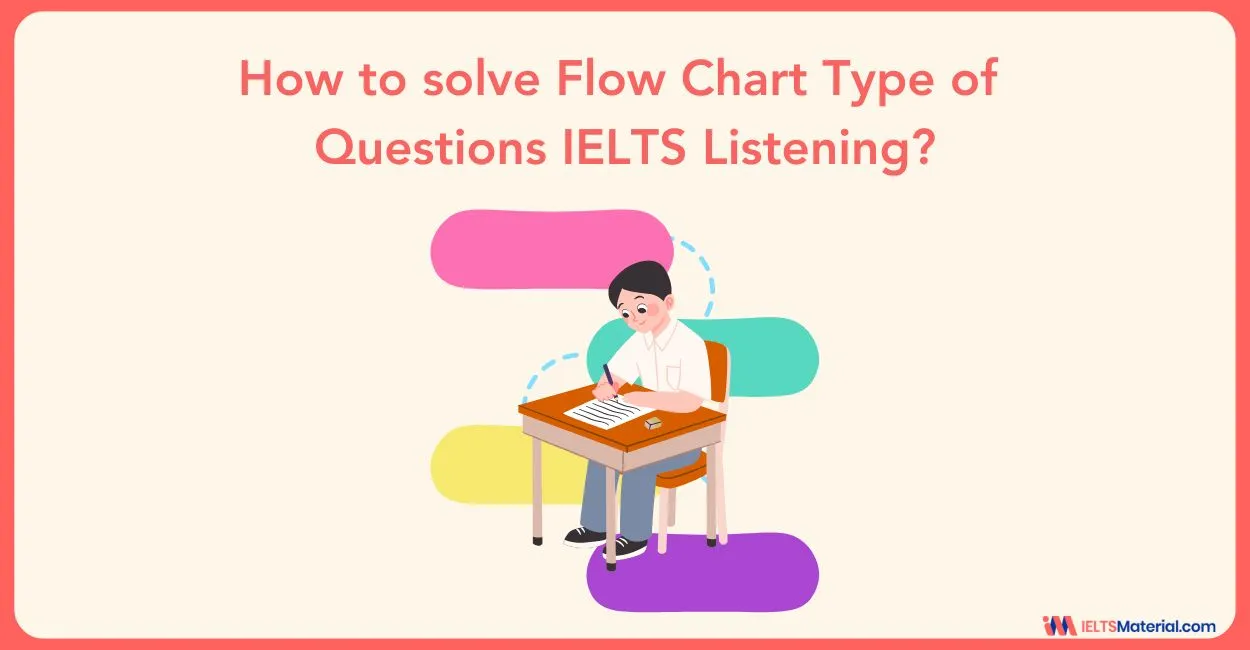How to Do Short Answer Type of Questions in IELTS Reading?
5 min read
Updated On
-
Copy link
Table of Contents

Limited-Time Offer : Access a FREE 10-Day IELTS Study Plan!
The short answer type of questions in the IELTS Reading section are perhaps the easiest questions in the IELTS Reading exam. It requires you to locate the answers in the given passage and answer a question within the number of words specified in the instructions. All you have to do is skim-read the passage and pay attention to the question words, which will help you understand the type of words you need to write as answers. Remember that the answers for the short answer questions always come in a particular order in the passage. Also, the short answer type of questions are very similar to the sentence completion questions. The only difference between both is that in sentence completion, you have to complete sentences. In contrast, you have to answer the respective questions in the short-answer type of questions in IELTS Reading.
What will the short answer type of questions analyse?
The short answer type of questions in IELTS Reading will test your ability to skim the passage, scan the passage for a specific keyword, identify the keywords, and understand the synonyms of the keywords.
Don’t exceed Word Limit
When tackling short-answer questions in the IELTS Reading section, you must have to pay attention to the word limit. Even if the answer is logically correct, an answer exceeding the word limit will be considered invalid. For example, if you are asked to complete a sentence with no more than two words, you can write one or two words. However, a three-word answer will be considered wrong.
Do not get confused with paraphrased words
You should always complete the statements or answer the questions with words taken from the passage. Questions from the passage may be paraphrased, so do not get confused about it. Instead, try to understand the hidden meaning to find your answers. The Short Answer question type is almost always used with factual information.
Go through the instructions and questions
It is very important to go through the instructions first and read the questions to understand what is being asked. Later, you can read the paragraph carefully, which is likely to contain the answer.
Underline the keywords
Once you have read the questions, underline the keywords and think of possible synonyms for them. You can use keywords to navigate and find the paragraphs. Now, using keywords, read the passage attentively and look for the answers. Once you’ve found the answer, check if it doesn’t exceed the word limit. Remember numbers, figures, and hyphenated words. are counted as a single word.
Do’s & Don’ts for answering Short Answer Questions
Consider following the do’s and don’ts while answering the Short-answer questions.
Do’s
- Quickly go through the questions to get an idea of what information you will have to find in the passage.
- Synonyms will be used, so ensure to recognize the hidden vocabulary.
- It’s super important to ensure that your answer doesn’t exceed the word limit.
- The order of questions can help you. Answers for question 4 will be between answers for questions 3 and 5 in the passage.
- If there are new terms in the passage, some answers are likely to be among them.
- Write your answers in capital letters to ensure precision and consistency.
- Your answer must be grammatically correct.
- If required, try changing the tense of any verbs to ensure the answer is grammatically correct.
Don’ts
- Don’t read the passage first and then move on to the questions.
- Do not read every word in the passage. Skim and scan the passage for a specific keyword.
- Do not panic if you find any unfamiliar words in the passage as these words must have been paraphrased.
Example
Try to answer the following short answer questions in the IELTS Reading module.
The Economic Importance Of Coral ReefsA. A lot of people around the world are dependent, or partly dependent, on coral reefs for their livelihoods. They often live adjacent to the reef, and their livelihood revolves around the direct extraction, processing and sale of reef resources such as shell fish and seaweeds. In addition, their homes are sheltered by the reef from wave action. B. Reef flats and shallow reef lagoons are accessible on foot, without the need for a boat, and so allow women, children and the elderly to engage directly in manual harvesting, or ‘reef-gleaning’. This is a significant factor distinguishing reef-based fisheries from near-shore sea fisheries. Near-shore fisheries are typically the domain of adult males, in particular where they involve the use of boats, with women and children restricted mainly to shore-based activities. However, in a coral-reef fishery the physical accessibility of the reef opens up opportunities for direct participation by women, and consequently increases their independence and the importance of their role in the community. It also provides a place for children to play, and to acquire important skills and knowledge for later in life. For example, in the South West Island of Tobi, in the Pacific Ocean, young boys use simple hand lines with a loop and bait at the end to develop the art of fishing on the reef. Similarly, in the Surin Islands of Thailand, young Moken boys spend much of their time playing, swimming and diving in shallow reef lagoons, and in doing so build crucial skills for their future daily subsistence. |
Questions 1-4
Using NO MORE THAN FOUR WORDS, answer the following questions.
Write your answers in boxes 1-4 on your answer sheet.
- From the passage, what exactly are people depending upon for their livelihoods?
- How does the reef protect homes?
- What does near shore fisheries involve?
- How do Moken youngsters spend their time?
Answers
|
Explanation
| For the first question, the answer is in the first para, 1st line; “A lot of people around the world are dependent, or partly dependent, on coral reefs for their livelihoods.”
The second answer is in the first para, 4th line; “In addition, their homes are sheltered by the reef from wave action.” The third answer is in the second para, 4th line; “Near-shore fisheries are typically the domain of adult males, in particular where they involve the use of boats, with women and children restricted mainly to shore-based activities.” For the fourth question, the answer is in the second para, 11th line; “Similarly, in the Surin Islands of Thailand, young Moken boys spend much of their time playing, swimming and diving in shallow reef lagoons, and in doing so build crucial skills for their future daily subsistence.” |
Also check:
Explore IELTS related articles

Start Preparing for IELTS: Get Your 10-Day Study Plan Today!
Recent Articles

Nehasri Ravishenbagam

Nehasri Ravishenbagam

Haniya Yashfeen





Post your Comments